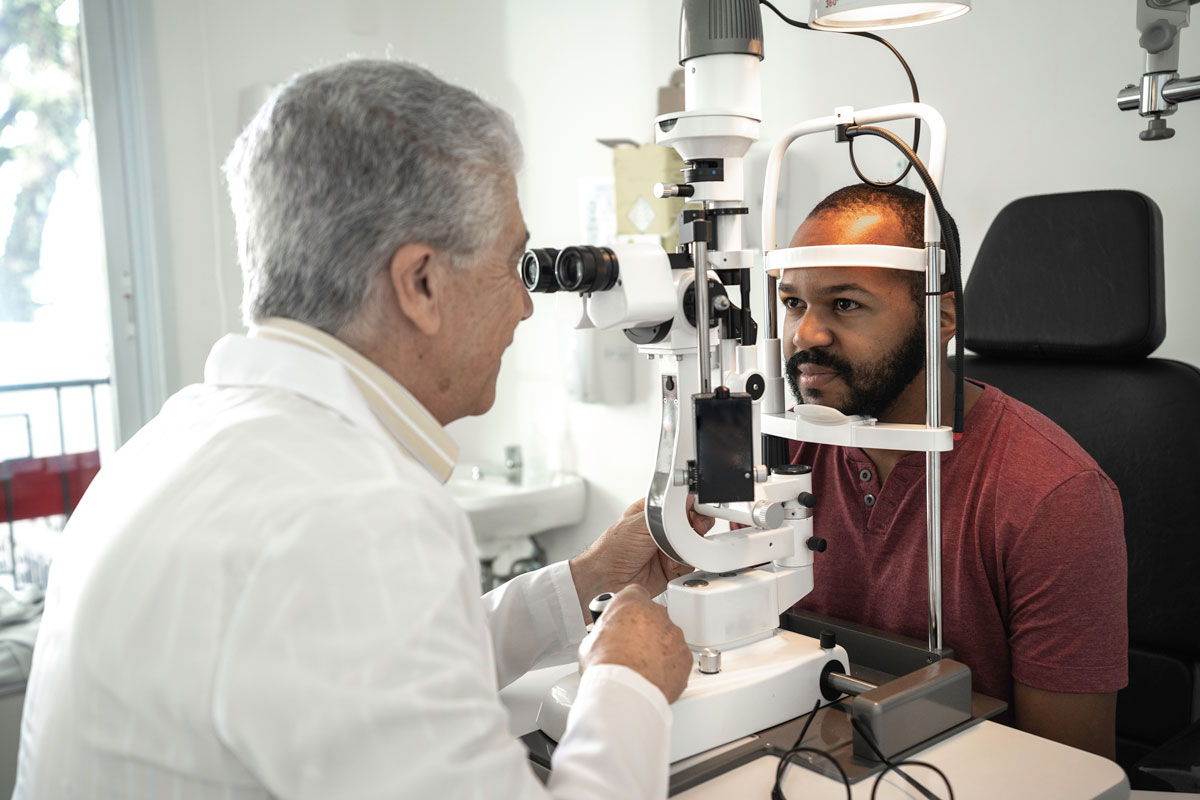 |
| A nationwide study demonstrated that patients with Medicare in areas with lower household incomes and less educated individuals consistently saw reduced use of eyecare services. Photo: Getty Images. |
A routine eye exam is important for detecting refractive error and diagnosing and monitoring degenerative eye disease. In addition to maintaining eye health, eye exams have also been shown to have utility in early detection of systemic conditions such as hypertension and diabetes. Nevertheless, rates of eyecare service use have shown to be lower than recommended, especially in high-risk groups like adults 65 and older. Researchers recently conducted a nationwide study to characterize variation in eye exam access and use for Medicare patients in the United States at a county-by-county level. They found a significant geographic gap in provider coverage.
The study, published in Ophthalmic Epidemiology, used the Medicare Physician & Other Practitioners—by Provider and Service dataset. It included all ophthalmologists and optometrists who performed eye exams on Medicare beneficiaries within a US county in 2019. For every county where exams were performed, the research team calculated the number of practicing vision testing providers, percentage of providers classified as ophthalmologists and number of exams per 100 Medicare beneficiaries.
The researchers noted that 28,937,540 eye exams were performed in 2019 by 46,000 providers in the 2,291 US counties analyzed. The make-up of the provider population was 37% ophthalmologists and 63% optometrists. It is likely that the aggregate number of optometrists in this study—28,944—underrepresents the total optometric workforce, as not every practicing optometrist participates in the Medicare system.
In the median county, 34.9 eye exams were provided per 100 Medicare beneficiaries. The average county had 20.1 exam providers, 16.5% of whom were ophthalmologists. There were a median of 6.6 eye exam providers for every 10,000 Medicare beneficiaries in the average county. The average provider performed 517.8 exams in 2019.
Multiple linear regression showed counties with lower median household incomes, higher poverty rates or fewer high school graduates had fewer eye exam providers per 10,000 Medicare beneficiaries and fewer eye exams performed per 100 Medicare beneficiaries.
“Reasons for this disparity could be related to inability to pay for care but may also include downstream social determinants of health such as living in communities with lesser health infrastructure and lack of health education,” the authors wrote in their paper. “The burdens of these negative outcomes fall disproportionately on lower income and less educated groups—groups that are often already the most vulnerable.”
The team proposed that addressing the disparities in access and use of eyecare services is essential to creating an overall more healthy and equitable society. The paper cited previous research demonstrating that just 76% of US counties contained practicing ophthalmologists or optometrists. “Other work may also investigate the incidence of eye diseases based on geography to identify if areas with reduced exams in our study correlate with greater burden of eye disease,” they concluded.
Bhatnagar A, Skrehot H, Ahmed M. County level analysis of eye exam access and utilization in the United States. Ophthalmic Epidemiol. May 25, 2023. [Epub ahead of print]. |


